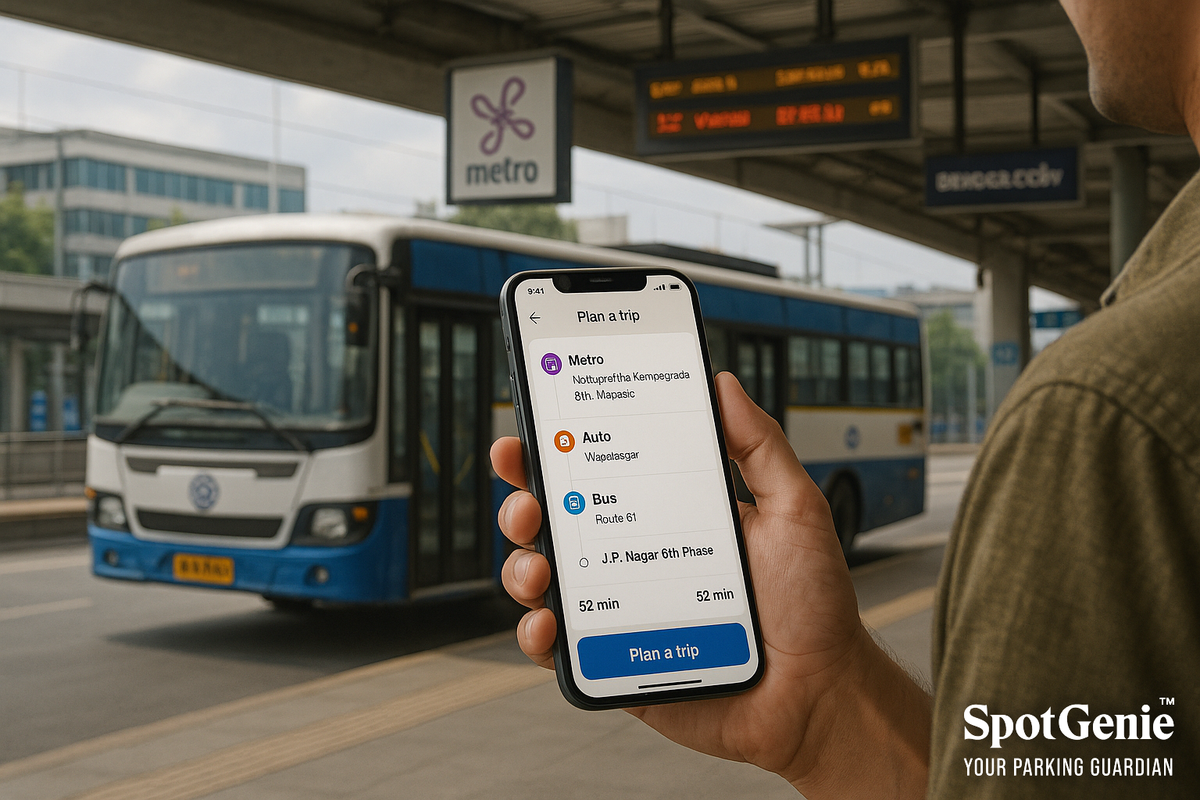Bengaluru’s Smart Transit Apps & Open Data
Explore how Bengaluru’s open public transit data powers apps like Tummoc and Namma Yatri-seamless planning, digital payments and behavior nudges.

Bengaluru’s Smart Transit Apps: Open Data Means Smarter Commutes
SpotGenie Gyaan highlights how Bengaluru is becoming India’s smartest mobility hub—thanks to real-time transit data and apps like Tummoc and Namma Yatri.
What Are Tummoc & Namma Yatri?
Imagine booking an auto, tracking your bus, viewing metro times, and paying—all in one place. That’s what apps like Tummoc and Namma Yatri are doing in Bengaluru. These homegrown apps are powered by open transit data released by BMTC and BMRCL. They offer route planning, multimodal navigation, fare details, real-time schedules, and digital payments, all while reducing dependence on private vehicles.
How Open Transit Data Is Transforming Commutes
Bengaluru’s transit agencies have adopted General Transit Feed Specification (GTFS) and real-time APIs that share updated bus, metro, and even feeder services. These data sets are freely available, allowing apps and innovators to create accurate, accessible tools for everyday commuters.
The result? Integrated mobility where you can plan a trip from Whitefield to MG Road using the metro, then an auto, and even track traffic congestion and carbon savings on the way.
Evidence of Impact
- In Electronic City, the STAMP initiative (co-run by WRI India and Toyota Mobility Foundation) showed a spike in metro usage once last-mile clarity and smart nudges were introduced through behavioral design and app guidance.
- Tummoc alone has onboarded over 3.5 lakh users in Karnataka.
- Namma Yatri is now collaborating directly with BMTC for expanding e-auto access at metro exits.
Challenges & Roadblocks
Despite progress, widespread adoption faces challenges:
- Data Inconsistencies: Real-time updates are sometimes delayed, causing rider confusion.
- User Awareness: Many commuters still don't know such apps exist—or hesitate to shift from old habits.
- Scalability: Other Indian cities are lagging in open data adoption, slowing MaaS growth.
What Riders & Authorities Should Do
- For Riders: Download and use Tummoc/Namma Yatri. Check real-time schedules, routes, and auto fares to improve daily mobility.
- For Authorities: Mandate open APIs, onboard new operators, and support innovation via open civic platforms.
Conclusion
Open transit data isn't just tech—it's transformation. Bengaluru shows that when cities open their data, they open doors to faster, greener, and more accessible travel for everyone.
Have you tried any of these apps yet? Share your commute experience and help others travel smarter with SpotGenie Gyaan!
Follow us on:
🅾 Instagram |
ⓕ Facebook |
𝕏 X |
▶️ YouTube |
🟢 WhatsApp



